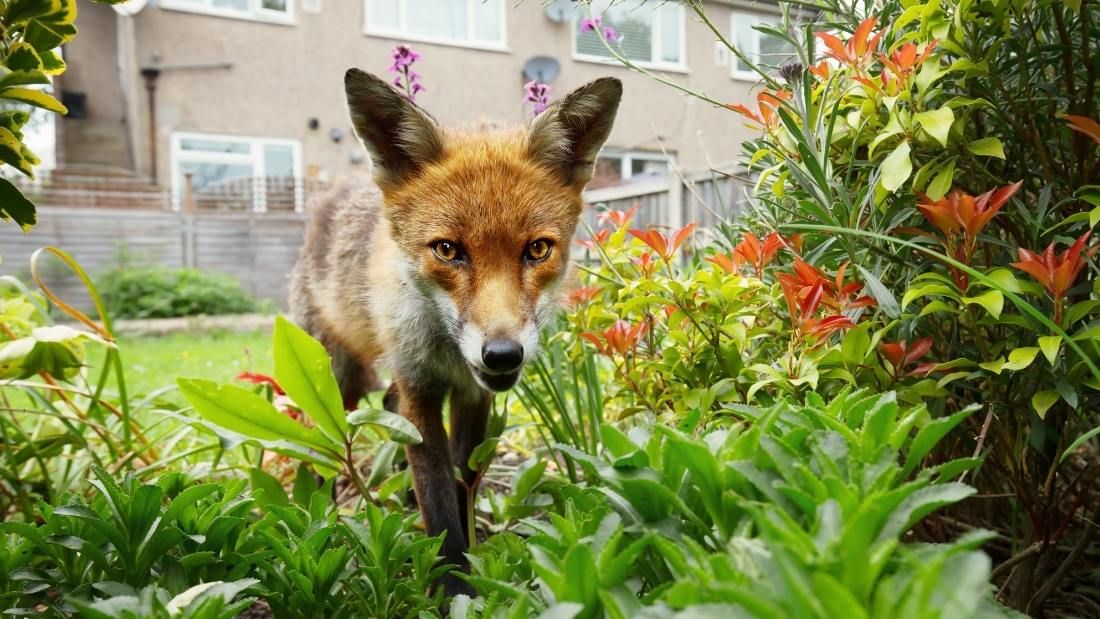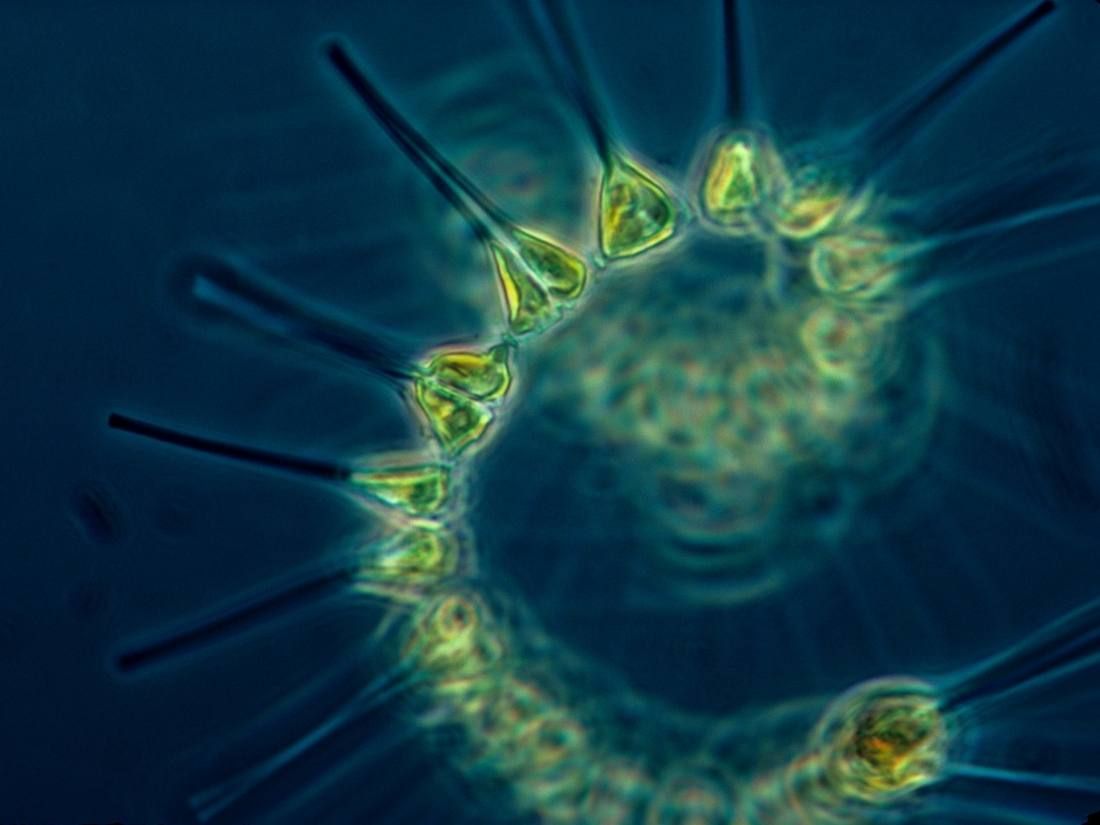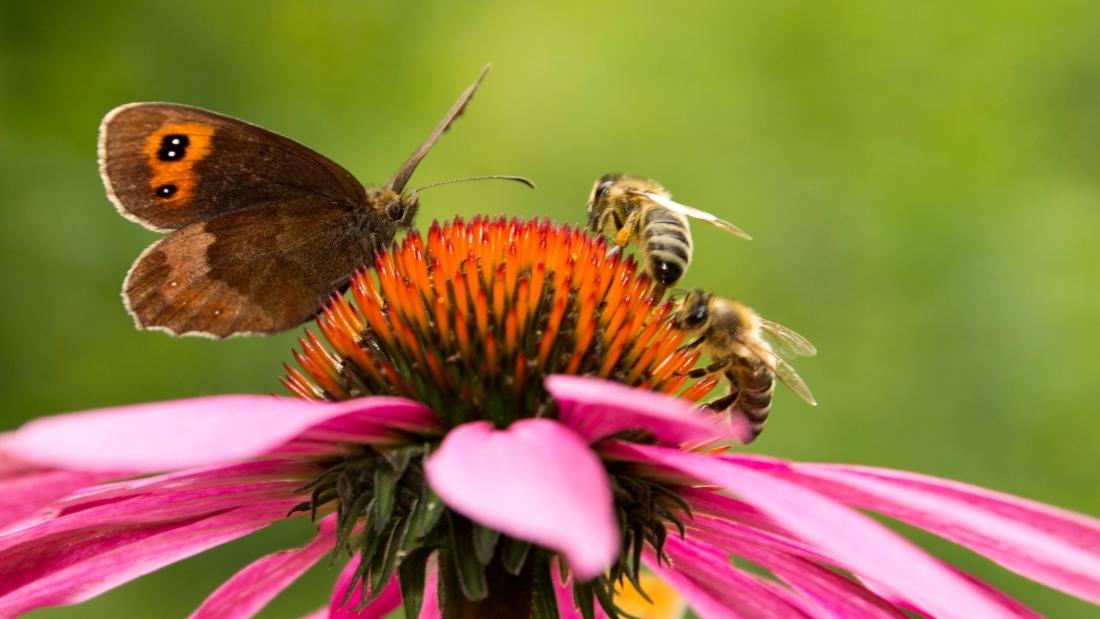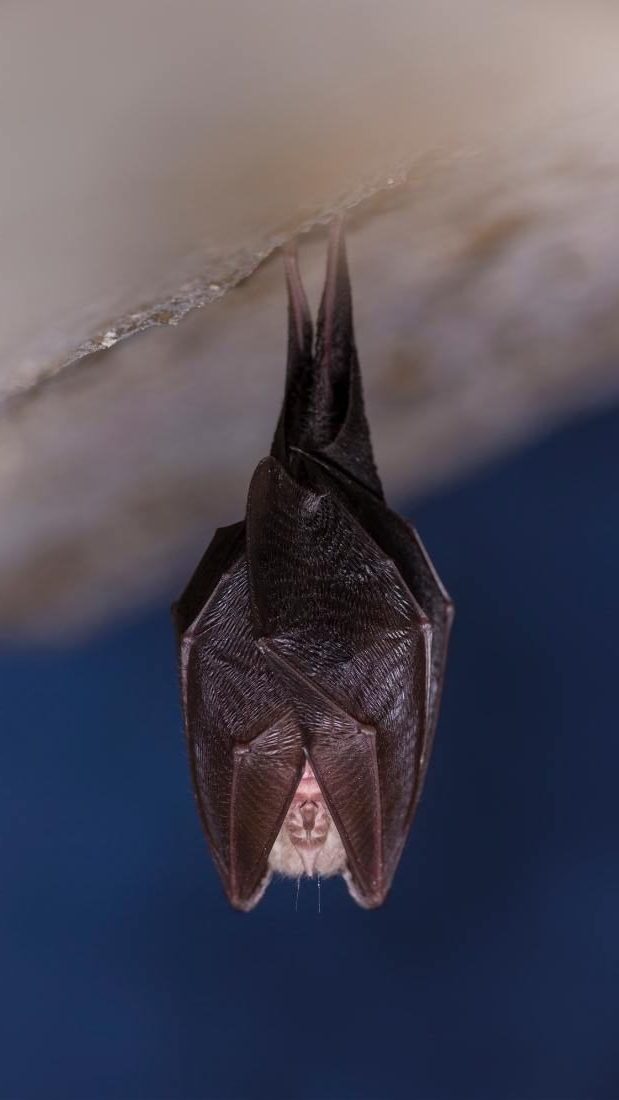What is Biodiversity and Why Does it Matter?

Biodiversity comprises the amazing variety of all life on Earth, from tiny microorganisms to large land, marine and aquatic species of both plant and animal.
Of the estimated 8.7 million different species on the planet, only 14 per cent of those that exist on land, and nine per cent that inhabit the oceans, have been classified.
Many will become extinct before they can even be identified.
A rich biodiversity is critically important for all life on Earth; complex ecosystems produce oxygen, filter water, recycle nutrients, generate soil and pollinate seeds.
The air we breathe, water we drink, food we eat and medicines we depend on, all rely heavily on biodiversity.
Bats, birds, butterflies, bees and other pollinators support over three-quarters of global food crops, including coffee, cocoa and almonds.
Larger animals act as seed dispersers, ensuring forests regenerate.
Whether you are looking at coral reefs bleaching, forests becoming savannahs or ice sheets melting, disrupting ecosystems that have developed naturally over thousands of years is likely to have devastating consequences.
Furthermore, encroaching into wildlife habitats is also increasing the risk of zoonotic ‘spillover’ diseases such as Covid-19, Ebola and HIV/AIDS and poses a pandemic threat.
What is Biodiversity
The term biodiversity was first used in 1985, as a shorter way of saying biological diversity. It refers to all land, marine and aquatic species of plant and animal, the genetic diversity between them and the ecosystems they inhabit. It also includes microorganisms such as bacteria and fungi. In other words, biodiversity is the amazing variety of all life on Earth.
The living layer of life around the Earth, on land and in the oceans, is called the biosphere. Our air, water, soil, oceans and climate all depend on the complex, dynamic interactions that occur between the billions of plants, animals and microorganisms that inhabit the biosphere.
Knowing how many species inhabit Earth is among the most basic, yet elusive, questions in science and it’s been suggested that scientists have abetter understanding of how many stars there are in the galaxy than how many species there are on Earth.
In 2010, Lord Robert M. May, then Professor of Zoology at the University of Oxford, said if aliens visited Earth,he thought their first question would be: “How many distinct life forms – species – does your planet have?” Embarrassingly, he said, our best-guess answer would be in the range of five to 10 million (May, 2010).
Since then, the most widely-accepted estimate puts the figure at 8.7 million, of which 2.2 million are marine species (Mora et al., 2011). This estimate includes all five known kingdoms of eukaryotes – living organisms with structured cells – and predicts 7.8 million species of animals (including insects), 298,000 species of plants, 611,000 species of fungi, 36,400 species of single-celled organisms (or protozoa) and 27,500 species of chromists which include brown algae, diatoms and water moulds. It does not include bacteria and viruses, which are highly numerous.
However, only 14 per cent of land-based species and nine per cent of those living in the ocean have been classified – the vast majority have yet to be identified.
The fungal kingdom is less well studied than the plant kingdom and little is known of its true biodiversity, which has been estimated at 2.2 million to five million species (Blackwell, 2011). Of these, only 148,000 have been described (Cheek et al., 2020).
The team behind the 8.7 million figure warns that given current extinction rates, many species will become extinct before they can be studied.
Human (or anthropogenic) impacts on the environment have become increasingly damaging and we have now reached a point where life on Earth, as we know it, is threatened with the type of destruction usually associated with science fiction disaster films!
Why does it matter?

An urban fox
For many people living in towns and cities, apart from the odd bird or urban fox, wildlife is generally only seen in TV documentaries. Some people may have heard about the plight of tigers or orangutans, but the threat of extinction extends to one million animal and plant species around the world.
“Biodiversity and nature’s contributions to people sound, to many people, academic and far removed from our daily lives” says IPBES Chair, Sir Robert Watson. He says: “Nothing could be further from the truth – they are the bedrock of our food, clean water and energy. They are at the heart not only of our survival, but of our cultures, identities and enjoyment of life” (IPBES, 2018). David Macdonald, Professor of Wildlife Conservation at the University of Oxford says:“Without biodiversity, there is no future for humanity”.
A rich biodiversity is critically important for all life on Earth for many reasons. The huge population declines we are seeing now, scientists warn, will have negative cascading consequences on ecosystem functioning and services vital to sustaining human civilisation (Ceballos et al., 2017).
Natures’ complex ecosystems provide a wide range of services including: oxygen production, water filtration,nutrient recycling, soil generation, pollination and seed dispersal. In fact, nature regulates many processes that we don’t even realise are the basis of our economies, lives and well-being, provides protection from environmental hazards and regulates the climate. The air we breathe,water we drink, food we eat and medicines we depend on, all rely heavily on biodiversity. We simply could not survive without the wide variety of animals, plants,fungi and microorganisms with which we share the Earth – and we need them much more than they need us!
Phytoplankton and rainforests
Phytoplankton are single-celled plants that drift near the ocean’s surface, living off carbon dioxide and sunshine. The name phytoplankton comes from the Greek words phyton meaning plant and planktos meaning to wander or drift. These microscopic species form the basis of the entire marine food chain providing food for krill; small, shrimp-like crustaceans that are the main staple food of hundreds of different animals including fish, whales, seals, penguins, squid and many others. Krill are the basis of the food web in the Southern Ocean around Antarctica and most marine species depend on krill for their survival.
The carbon cycle
Phytoplankton have an important role storing carbon and are responsible for most of the transfer of carbon dioxide from the atmosphere to the ocean. They produce their energy through photosynthesis, like other plants, taking in carbon dioxide and releasing oxygen. They account for about half of the photosynthesis on the planet, despite amounting to only about one per cent of the global plant biomass. They are one of the world’s most important producers of oxygen. But phytoplankton populations in the oceans have declined substantially over the past century because of rising sea temperatures and acidification, caused by carbon dioxide in the atmosphere dissolving in the sea.

Phytoplankton
Rainforests also produce some of the oxygen we breathe but an even more significant value lies in their rich biodiversity, their vast ability to store carbon and the way they influence the local and global climate – we are only just discovering the significance of some of these roles.
Pollinators
Bats, birds, butterflies, bees and other small insects are very important pollinators. More than three-quarters of global food crops, including fruits and vegetables and some of the most important cash crops, such as coffee,cocoa and almonds, rely on animal pollination and would not survive without it. The decline in pollinating insects could have dire consequences for ecosystems and food security. If you want variety in your food cupboards and on your plate, we need to preserve biodiversity in nature.

Butterfly and bees – pollinators.
Whether you are looking at coral reefs bleaching,forests becoming savannahs or ice sheets melting,disrupting ecosystems that have developed naturally, over thousands or even millions of years, is likely to have devastating consequences. How dependent one part of a complex ecosystem is on another may not be apparent until it is lost. Think of biodiversity like a knitted jumper – pulling out a loose thread may not cause a serious problem but it may unravel the entire jumper.
Only 14% of species on Earth and 9% in the ocean have been classified. Many species will become extinct before they can be identified Source:
(Mora et al., 2011.)
Writing in The Guardian, Professor of Environmental Sciences Garry Peterson, from the Stockholm Resilience Centre in Sweden, said: “We’re surprised at the rate of change in the Earth system. So much is happening at the same time and at a faster speed than we would have thought 20 years ago. That’s a real concern. We’re heading ever faster towards the edge of a cliff” (Watts, 2019). Is this a risk we really want taken with the future of the planet?
Pandemic threat
The elephant, or perhaps the bat, in the room is Covid-19. The expansion of animal agriculture and the destruction of wild habitats makes it more likely that infectious diseases in wildlife will transfer to humans. If we keep invading and decimating wild landscapes,killing wild animals or capturing them and taking them to markets, we will inevitably shake viruses loose from their natural hosts.
The coronavirus that caused the Covid-19 pandemic is thought to have jumped to humans from bats, possibly via a pangolin – the world’s most trafficked animal, overexploited for both their scales and meat. Of the nine different pangolin species listed by the IUCN, three are critically endangered, four are endangered and the remaining two are vulnerable (IUCN, 2022).
“Pandemic prevention governance has mostly focused on outbreak surveillance, containment,and response, rather than on avoiding zoonotic spillovers.”
(Gallo-Cajiao et al., 2021.)
However, 10 years ago, in are mote cave in Yunnan province in China, virologists found horseshoe bats harbouring a virus very similar to SARS-CoV-2 (the virus that causes Covid-19). In the laboratory they found the virus was able to infect human cells (Ge et al.,2013) and in 2016, researchers reported that it could replicate inhuman airway cells. They described it as being “poised for human emergence” (Menachery et al., 2016). A failure to act on these warnings could mean an opportunity to protect human health was missed.
Diseases that jump from animals to humans are called “zoonotic diseases”. Other notable ones include Ebola, SARS and MERS, all caused by viruses that spilled over from bats to chimpanzees (hunted for bushmeat), civet cats (in wet markets) and camels (used for meat and racing), respectively. The HIV virus that causes acquired immune deficiency syndrome (AIDS) is thought to have jumped to humans from primates (chimpanzees and sooty mangabey monkeys) hunted for bushmeat. And of course, avian influenza viruses, of varying degrees of pathogenicity, are now present in pig and poultry farms across the world.
One way to take control is for large numbers of people to stop eating meat, stop wild markets and stop factory farming – thus taking away the opportunity for new viruses to mutate and jump species. We must change the way we view animals, the environment and our diets.

Bat
We must stop eating animals. It is time to finally make the connection between animal agriculture, environmental destruction and disease outbreak. We must stop tearing down forests to make way for animal farming or to grow animal feed. We must protect ecosystems and prioritise the safety and freedom of wild animals, leaving them to live their lives away from human interference. If we don’t take urgent and far-reaching action now, eating animals will be the death of us.
Blackwell M. 2011. The fungi: 1, 2, 3 … 5.1 million species? American Journal of Botany. 98 (3) 426-438.
Ceballos G, Ehrlich PR and Dirzo R. 2017. Biological annihilation via the ongoing sixth mass extinction signalled by vertebrate population losses and declines. Proceedings of the National Academy of Sciences. 114 (30) E6089-E6096.
Cheek M, Nic Lughadha E, Kirk P et al. 2020. New scientific discoveries: plants and fungi. Plants People Planet. 2 (5) 371-88.
Ge XY, Li JL, Yang XL et al., 2013. Isolation and characterization of a bat SARS-like coronavirus that uses the ACE2 receptor. Nature. 503 (7477) 535-8.
IPBES. 2018. Media release: Biodiversity and nature’s contributions continue dangerous decline, scientists warn. https://www.ipbes.net/news/media-release-biodiversity-nature%E2%80%99s-contributions-continue-%C2%A0dangerous-decline-scientists-warn
IUCN. 2022. The IUCN Red List of Threatened Species. https://www.iucnredlist.org/
May R. 2010. Tropical arthropod species, more or less? Science. 329, 41-42.
Menachery VD, Yount BL Jr, Sims AC et al., 2016. SARS-like WIV1-CoV poised for human emergence. Proceedings of the National Academy of Sciences. 113 (11) 3048-53.
Mora C, Tittensor DP, Adl S et al. 2011. How many species are there on Earth and in the ocean? PLoS Biology. 9 (8) e1001127.
Watts J. 2019. Risks of ‘domino effect’ of tipping points greater than thought, study says. The Guardian. www.theguardian.com/environment/2018/dec/20/risks-of-domino-effect-of-tipping-points-greater-than-thought-study-says
Next Chapter: Assessing the Problem




